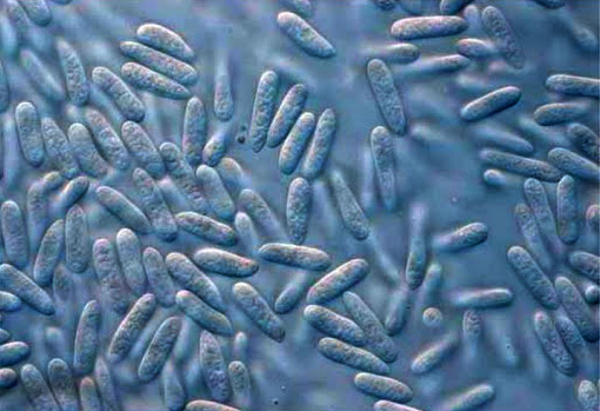Scientists have discovered two actinomycetes bacterial strains to fight against a fungal plant pathogen called Colletotrichum gloeosporioides. The pathogen poses a major threat to large cardamom plants, which are a major source of income for the farmers of Sikkim. The lead scientists behind this discovery are from Department of Biotechnology’s Imphal-based Institute of Bioresources and Sustainable Development (IBSD).
The strains called Streptomyces vinaceus RCS260 and Kitasatospora aburavienis RCS252 were discovered when researchers were investigating antimicrobial potential of actinomycetes isolated from rhizosphere soil (soil near roots of plants) from Lachung area of northern Sikkim. Actinomycetes are a heterogeneous group of anaerobic Gram positive bacteria well-known for a filamentous and branching growth patterns. Encouraging results led to extraction and analysis of metabolites produced by the actinomycetes.
The strains called Streptomyces vinaceus RCS260 and Kitasatospora aburavienis RCS252 were discovered when researchers were investigating antimicrobial potential of actinomycetes isolated from rhizosphere soil (soil near roots of plants) from Lachung area of northern Sikkim.
The researchers isolated 26 actinomycetes from the soil samples. Of them, two strains, Streptomyces vinaceus RCS260 and Kitasatospora aburavienis RCS252 produced extracellular enzymes such as chitinase, cellulase, and protease along with other antimicrobial metabolites. They showed antimicrobial action against a wide range of plant pathogens which could be ascribed to action of hydrolytic enzymes including chitinase, alpha 1, 3-glucanase, chitosanase and protease.
Studies on actinomycetes isolated from different environments have attracted attentions of scientists and industries for the production of secondary metabolites and other functionalities. Actinomycetes isolated from extreme environments such as Antarctica and some habitats of Manipur and Sikkim have produced valuable metabolites of immense importance to industry and agriculture.
Sikkim is one of the largest producers of large cardamom. However, the state has reported significant decline in its yield over past few years. Among many factors responsible for the decline of crop yield, the fungal blight cause by Colletotrichum gloeosporioides is a major concern
Source: Vigyan Prasar
Image Courtesy: Padil
You may also like
-
New Heat-Based Approach To Cancer Treatment Can Reduce Chemotherapy Doses
-
Scientists Take A Major Step Towards Unification Of Classical & Quantum Gravity
-
India Graphene Engineering and Innovation Centre (IGEIC) Under the Vision of Viksit Bharat@2047 Launched
-
New High-Performance Gas Sensor can Monitor Low Level Nitrogen Oxides Pollution
-
Antidepressant Drug can be Repurposed for Treating Breast Cancer
